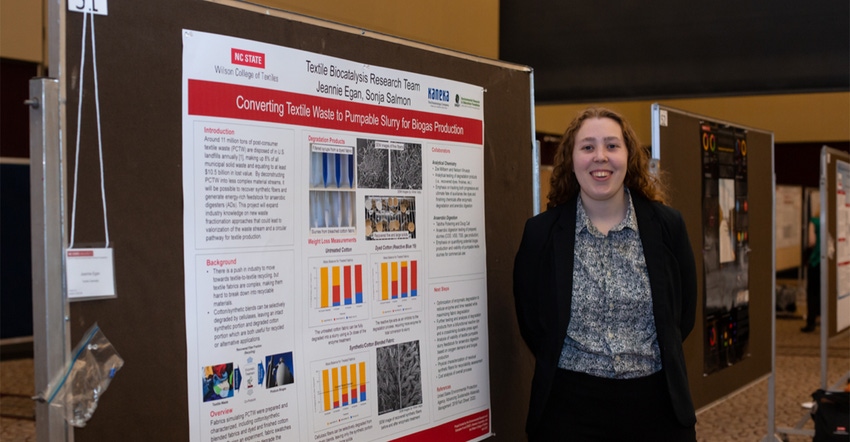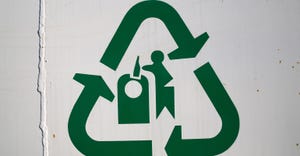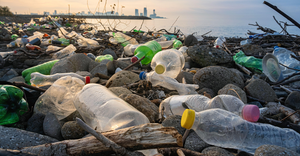The fashion industry is ever changing. Consumers follow new trends and designers, and once those change, they move on. The Motley Fool estimates that the average American household spends approximately $1,500 per year on clothing.
April 11, 2023

The fashion industry is ever changing. Consumers follow new trends and designers, and once those change, they move on. The Motley Fool estimates that the average American household spends approximately $1,500 per year on clothing[1], and as of 2018, the US fashion industry was estimated to be worth nearly $380 billion[2]. While some people wouldn’t be caught dead in the same outfit twice, others love to wear their favorite jacket over and over again. Either way, our apparel doesn’t stay in our closets forever. Items wear thin, go out of style, and, to put it gently, can lose compatibility with our eating and exercise habits. So, what happens? Where do our clothes go to die?
While most recycling facilities don’t accept textiles, there’s an active second-hand clothing industry, with many local shops rebranding used apparel as “vintage” or “retro.” National organizations like Goodwill and the Salvation Army have thousands of thrift stores dedicated to re-selling clothes that others no longer want. Such efforts are an admirable attempt to resuscitate textiles before they’re formally pronounced dead, but once unable to be re-used as clothing, things get challenging. While textiles consisting of 100% organic materials are easier to recycle, today’s clothing is focused on trendy, short-term use, and most consist of a blend of synthetic (e.g. polyester) and non-synthetic (e.g. cotton) fibers. The creates a problem as blended fabrics are much more challenging to recycle because the synthetic and non-synthetic fibers must be separated.
As a result, many blended fabrics ultimately go to landfills. Between 65 and 92 million tons of textile waste ends up in landfills each year. One could fill two of Egypt’s Great Pyramids and not even put a dent in the pile. This number alone is daunting, but when you add the fact that textiles don’t readily degrade in a landfill environment, the accumulation of textile waste is estimated to be ~4.5GT by 2040. That amounts to an estimated $10.5 billion in annual lost value.
Jeannie Egan, a PTR Baler & Compactor/Reithmiller scholar with the Environmental Research & Education Foundation (EREF), is tackling this challenge as part of her Master’s level research efforts at North Carolina State University. Egan’s work involves evaluating a process that, through an anerobic digestion process enhanced by digestive enzymes, degrades natural (i.e. non-synthetic) fibers in blended fabrics. After this process, only synthetic fibers remain intact, and they can be recovered and recycled to create more textiles. The natural fiber degradation byproducts can be used to produce biogas as an energy source, strengthen composites, or produce biofuels through fermentation.
But textiles are complex. Beyond just the type of fibers used, the clothing is constructed differently in knit, woven, or non-woven formats. Most contain liberal use of dyes as well as chemical finishes such as water, flame, and wrinkle resistance and fabric softeners. A focus of Egan’s research is to evaluate the performance of the process considering these different factors. She states, “I think it's important to address one environmental issue from multiple angles, so I hope this project can offer one solution among the many needed that can provide a feasible and practical pathway to a more circular textile waste stream. Using realistic fabric samples containing dyes or chemical additives is necessary to prove the validity of incorporating this degradation mechanism into large-scale textile waste management in the future.”
Textiles waste is one of the most challenging waste materials to manage as it has not typically been amenable to traditional composting or recycling approaches. Textiles either pose contamination issues or do not fully degrade in commercial composting operations which can clog or interfere with screens and other separation equipment in recycling facilities. This means that segregated approaches specific to textile waste have potential if they can be used at a larger scale.
Jeannie Egan will present an update on her research at the upcoming 2023 Waste Expo. The Expo will also include Waste360’s TRASHION runway show co-produced by Refashion Week NYC, Dress for Success, and New Orleans Fashion Week. The show will be hosted at EREF’s booth and feature local upcycled designers and thrifted stylists who’ve breathed new life into discarded items.
[1] https://www.fool.com/the-ascent/personal-finance/articles/the-average-american-spends-this-much-on-clothes-every-year/
[2] https://www.jec.senate.gov/public/index.cfm/democrats/2019/2/the-economic-impact-of-the-fashion-industry
About the Author(s)
You May Also Like


